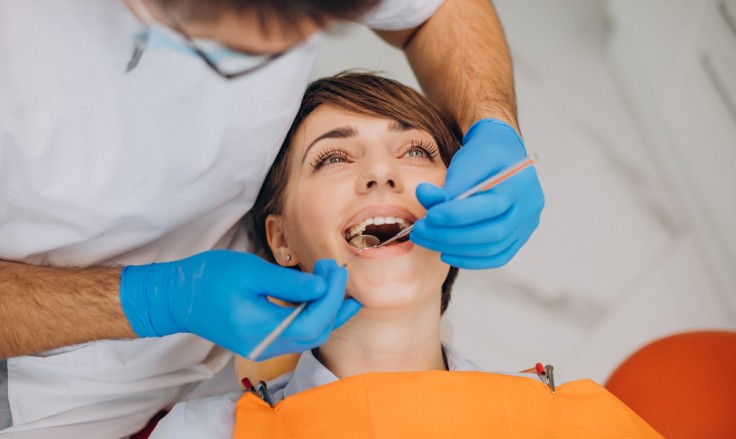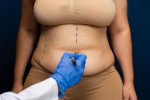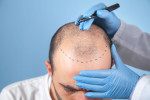Introduction
The All-on-4 Bridge is a restoration designed to replace an entire arch of missing teeth. It uses only four dental implants to support a full set of fixed prosthetic teeth. Many patients choose this treatment for its stability, quick results, and natural appearance.
In this article, we explore the All-on-4 Bridge procedure, benefits, costs, and recovery process. You will learn how it differs from other dental implant options. And whether it could be right for you.
What is an All-on-4 Bridge?
An All-on-4 Bridge is a fixed dental restoration supported by four strategically placed implants. Two implants are positioned vertically at the front of the jaw. While two at the back are placed at an angle for stability. This design maximises contact with available bone, often removing the need for bone grafting.
The bridge is made from durable materials such as acrylic or zirconia. It is custom-designed to match your bite, face shape, and smile.
Who is a Candidate for an All-on-4 Bridge?
Most candidates are people with multiple missing teeth or complete tooth loss in one arch. Ideal candidates should have healthy gums, good oral hygiene, and sufficient jawbone to support implants. Even patients with some bone loss may be eligible due to the angled implant placement.
How the All-on-4 Bridge Procedure Works
The procedure typically follows these steps:
- Initial consultation – Your dentist examines your mouth, takes X-rays, and discusses your goals.
- Treatment planning – Digital scans and impressions are taken to create your custom bridge.
- Implant placement – Four implants are placed under local anaesthesia or sedation.
- Temporary bridge – A provisional bridge is fitted the same day for immediate function.
- Healing period – Over three to six months, the implants fuse with the bone in a process called osseointegration.
- Permanent bridge – The final bridge is attached once healing is complete.
Benefits of the All-on-4 Bridge
- Fewer implants needed: Only four implants support a full arch.
- Immediate results: Temporary teeth are fitted the same day.
- Stability: Fixed bridge doesn’t shift like removable dentures.
- Bone preservation: Stimulates jawbone and prevents further bone loss.
- Improved function: Restores chewing ability and clear speech.
- Aesthetics: Looks and feels like natural teeth.

All-on-4 Bridge vs Traditional Implants
Traditional dental implants often require six to eight implants per arch and possible bone grafting. The All-on-4 method uses fewer implants, often avoiding bone grafts, and offers faster results. Recovery is typically shorter, and costs are usually lower due to fewer implants being placed.
Cost of an All-on-4 Bridge
Prices vary depending on the country, clinic, and materials used. In the UK, costs range from £12,000 to £16,000 per arch. In Turkey, prices can be significantly lower. Often between £3,000 and £5,000, while maintaining high treatment quality.
All-on-4 Bridge: Recovery and Aftercare
Recovery after All-on-4 Bridge surgery is usually faster than with traditional implants. Mild swelling and discomfort are common for the first few days. Patients should follow a soft-food diet during the healing period to protect the implants.
Dental check-ups, daily brushing, and using a water flosser help maintain the bridge and implants.
Possible Risks and Complications
While the All-on-4 Bridge has a high success rate, possible complications include:
- Implant failure due to poor healing or infection
- Gum inflammation around implants
- Bridge damage from biting hard objects
Choosing an experienced dental team greatly reduces these risks.
All-on-4 Bridge in Turkey
Turkey is a leading destination for dental tourism. Offering affordable treatment options with skilled dentists. Clinics often include accommodation, airport transfers, and aftercare in their packages. Making it a convenient choice for international patients.
Longevity and Maintenance
The longevity of an All-on-4 Bridge depends on both the quality of the materials. As well as patient care. Daily cleaning, avoiding very hard foods, and attending dental check-ups will extend its lifespan. With consistent maintenance, many patients enjoy decades of trouble-free function and aesthetics.
Adjusting to Your New Smile
Adapting to your new smile can take a few weeks as you become familiar with speaking and chewing. Many patients notice improved confidence immediately, while minor adjustments to bite or speech resolve quickly. Support from your dental team ensures a smooth transition to your new smile.
Follow-Up Appointments After All-on-4 Bridge Surgery
Regular follow-up appointments are essential to check implant stability and gum health. Your dentist will ensure the bridge fits perfectly. Make any needed adjustments, and offer cleaning advice. Early detection of any issues helps prevent costly repairs or complications later on.
Dietary Guidelines After Receiving an All-on-4 Bridge
In the first weeks after surgery, a soft-food diet helps protect the implants during healing. Gradually, you can reintroduce firmer foods as advised by your dentist. Avoiding very sticky or hard items will reduce the risk of damaging the bridge.
Customisation Options for the All-on-4 Bridge
Each All-on-4 Bridge is customised in colour and size to match the patient’s facial features. Dentists work closely with dental technicians to create a natural-looking smile. That complements the lips and jawline. This personalisation helps achieve both functional and aesthetic satisfaction.
Conclusion
The All-on-4 Bridge offers an aesthetic and functional solution for patients with multiple missing teeth. It requires fewer implants. Offers same-day results, and reduces the need for complex procedures like bone grafting.
For more information and to book a consultation visit the ACIBADEM Beauty Center Dental Treatment webpage.
Frequently Asked Questions
With proper care, it can last 10–15 years or more before replacement is needed.
Only a dentist can remove it, as it is fixed securely to the implants.
Most patients experience mild discomfort that subsides within a few days after surgery.
Often not, because the angled implants make use of available bone.
Daily brushing, water flossers, and regular dental visits keep the bridge clean and functional.














